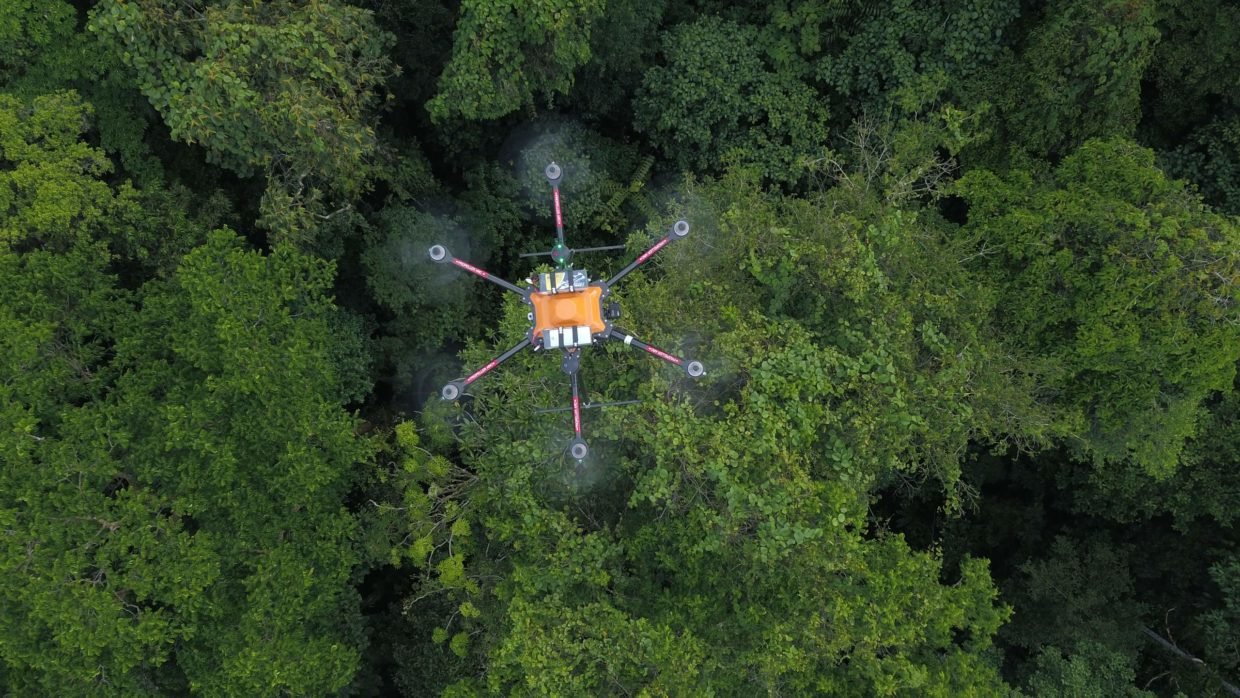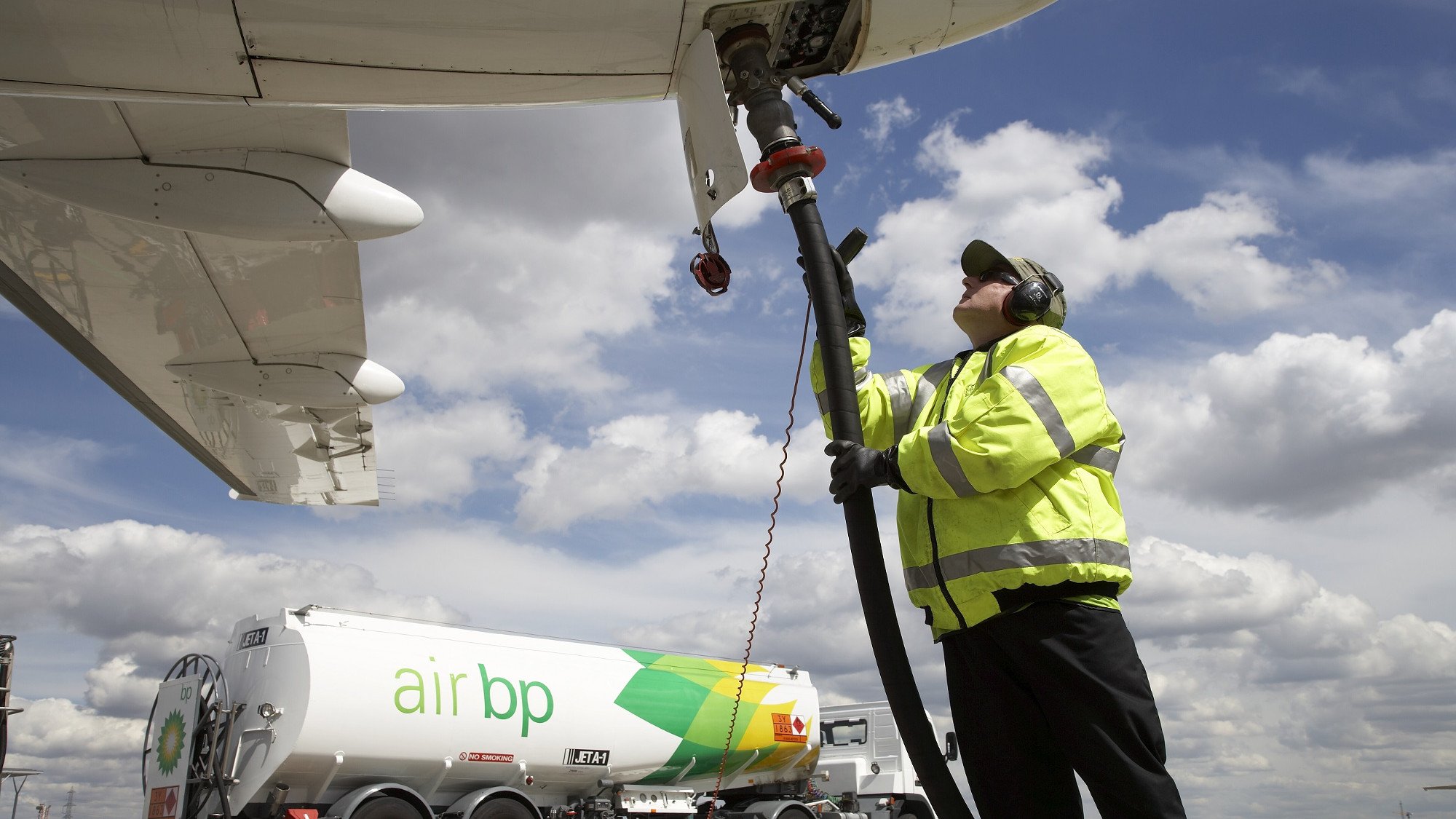
Our Air Transport Cadets Programme
The Details
Training Activities
This unique system, with a mixture of classroom-based and practical training, is designed to enable you to shape the best ways of educating your country’s next generation of aviation personnel. Usually run in parallel to national secondary education, and/or alternatively, as a full time further education programme.
Our elite team of experts will guide the establishment of an Aviation Training Centre to deliver i.ACT’s tailor-made Air Transport Cadets Programme.
The in-country programme for your Next Generation Aviation Professionals (NGAP) could include:
Flying - Gliding
Training aircraft: ASK 21 B Glider - mid-wing two-seater with 17m span.
-
Putting the “Air” into Air Cadets; presenting the opportunity, under supervision, at a Gliding School to work as a team, learning how to launch and recover winch-launched, aerotowed or self-launching motor gliders. Designed as a day-visit activity, to give cadets possibly their first airborne experience, Air Experience Gliding (AEG) provides entry level instruction in aerodynamics and controlling the aircraft, first in a classroom, then taking control and practicing what they’ve learned in the air.
-
Achieved through attendance at a Gliding School either over successive weekends until completed, or as a continuous week-long course. Course time will vary due to an individual’s progress and the weather in your part of the world. So, motivation and commitment are key. Most complete their first solo flight within 6 days, and at that point are presented with solo glider pilot wings.
-
Planning on success, some cadets are invited to be trained as Instructors on a Gliding School, following on from first solo with Advanced Glider Pilot Training. Subject to performance, selected Cadets enter an Approved Course of Training for Instructor Ratings – Basic, Assistant and Full Category. Instructor Ratings relate to conventional winch-launched, aerotowed and or self-launching motor gliders. All operate under the oversight of a Chief Flying (Gliding) Instructor.
Conventional winch-launched gliders and self-launching motor gliders.
Pipistrel SW 121A-Explorer - For training and Air Experience flying.
Pipistrel SW 121A-Explorer - High performance, two-seater, IFR ready
Pipistrel SW 121A-Explorer - Day/night and intentional spins, EASA type-certified.
ASK 21b Glider - winch-launched or aerotow.
ASK 21b - No other 2-seater has turned a larger number of students into solo pilots.
Skylaunch Evolution - Lightweight glider winch, easily towed on soft airfield or on highway with a 4 x 4 vehicle (or similar).
Flying - Powered
Training Aircraft: Diamond DA40 NG - Unmatched safety record. With proprietary 168hp jet fuel engine.
-
Flown in a specific type of light training aircraft, operated by experienced professional pilots / instructors; Air Experience Flying (AEF) enables cadets to be shown how the aircraft flies, be given the chance to control it, and if appropriate, experience aerobatics too.
-
For many a PPL - Private Pilots’ Licence – is one of the first steppingstones to proving they have the aptitude for powered flying, and potentially a career as a professional pilot within the civil air transport sector or public service.
-
The minimum age to commence pilot training for an Air Transport Pilot Licence (ATPL) is 18, and a licence cannot be attained until age 21. This can take up to 23 months, depending on related experience, e.g., PPL, before qualifying, cadets will also need to hold a Class 1 Medical Certificate. Due to the high costs involved, we recommend a medical before advancing to selection for training and then only after passing the UK’s Honourable Company of Air Pilots Aptitude Assessment for Potential Pilots.
Single and multi-engine light aircraft.
Diamond DA40 NG - Durable and aerodynamically efficient composite airframe.
Diamond DA40 NG - All round practical and versatile multi-use four seat aircraft.
Diamond DA40 NG - State-of-the-art glass cockpit and engine choices.
Diamond DA42-VI - Advanced twin technology.
Diamond DA42-VI - Garmin's Synthetic Vision technology with G1000 terrain-alerting database.
Diamond DA42-VI - Exceptional visibility as a multi-engine training platform.
Flying - UAS
Cadets Aged 16 - 20:
UK Ofqual A2 Certificate of Competency
UK Ofqual A4 General VLOS Certificate - Drones up to 25kg
UAS: Unmanned Aerial Systems
-
Develops a strong understanding of the rules and regulations around flying an Unmanned Aerial Vehicle (UAV), based on UK Guidance, to gain understanding of the responsibilities upon a UAV operator; how to report incidents, accidents and more.
-
In this section, Cadets learn everything they need to know about where they can and can't operate and who they need to contact when flying in certain airspace.
-
Cadets learn how to fly a UAV safely. This section teaches Cadets all about checking the safety of their drone and ensuring that the drone is safe to fly in the correct way.
-
Defined as the human capabilities and limitations which have an impact on the safety and efficiency of all aeronautical operations. It is essential that Cadets understand their own personal limitations and apply a disciplined approach to flight operations.
-
Knowing how the UAS aircraft operates is essential for safe flying. This section teaches Cadets how to translate their imbedded earlier knowledge, about the principles of flight, and how to know whether their drone is safe to fly.
-
Cadets learn about their responsibilities as a Drone Pilot. They learn and understand to take the reasonable steps they must take to ensure a smooth flight.
Developing operating procedures to bring together all the knowledge gained in a final section about VLOS, identifying congested areas, collision avoidance and enhanced operational awareness.
Cadets are finally guided to prepare and submit their own Operations Manual, detailing how they will be using a drone, ready to submit to their National CAA.



Space - Science & Technology
Cadets Aged 12 - 18
Cadets explore space science and the technology that underpins it, developed for each national situation. This online credit-bearing certificate course provides cadets with foundation knowledge across the space domain. The space industry requires professionals who are capable of communicating and understand the nature of operating in space.
The course provides cadets with basic knowledge and delivers content in a balanced method to include operational roles, engineering, and orbital navigation.
Key features in this introductory training could include:
Introduction to Space Flight.
Satellite and Spacecraft Systems.
Human Factors in Space.
Spaceflight and Operations Training.
Introduction to Space Navigation.
Unmanned Space Systems and Application.
This provides an entry level foundation for Cadets interested in a career in the Aerospace sector.
Cadets aged 18-20 with this special interest are encouraged to advance to an appropriate university to undertake a Degree in Space Science.



Flying - Ground Support
-
Aviation is global and references model law, rules and standards primarily as recommended by the International Civil Aviation Organization (ICAO). These influence a complex series of local, national, regional, and international regulations and law. Understanding the basics of International Aviation Regulation and Law will give you the elementary skills and knowledge you need in how and when global aviation standards, regulations and laws are applied within the industry, as well as considering related contract, commercial and civil law.
-
An introduction to the Basic Course in Aviation Medicine (BCAM) provides qualified Medical Doctors with a Special Interest in Aviation Medicine with the fundamental theoretical and practical training they will need in physiology, psychology, and clinical practice in relation to aerospace medicine. It normally meets the educational requirements to be able to apply to a National Aviation Authority to become an Aeromedical Examiner (AME) with Class 2 medical certification privileges.
-
Address the complex interrelationship of the Air Navigation Service Provider (ANSP); either operated as a public (state) or private legal entity, licenced by the National Aviation Authority. The ANSP manages air traffic for an airport operator, region, or country and provides some or all of the following services: Air Traffic Control, Air Traffic Management, Communication navigation and surveillance systems, Meteorological service for air navigation, Search and rescue, Aeronautical information services /aeronautical information management - provided to aircraft during all phases of operations (approach, aerodrome, and en-route).
-
Training and testing in the use of VHF Radio equipment and proficiency in Aviation English Language is fundamental to all aviation training. English is required to operate Radio equipment in an aircraft or between an aircraft and ground station, also necessary to global aeronautical communications. English language proficiency endorsement can only be issued in accordance with ICAO English Language Proficiency standards and so too National Aviation Authority Radio Operator Licencing.
-
Basic Navigation by radio aids includes navigation mainly by reference to indications of bearing and distance indicated on VOR, DME and ADF equipment in the aircraft, derived from ground-based radio beacons. However, Global Navigation Satellite Systems (GNSS) is the key technology in modern aeronautical communications, navigation, and surveillance (CNS) infrastructure. Specifically in the aircraft, electronic flight instrument systems (EFIS) typically comprise two display units: one serving as a primary flight display, and one as a multi-function display. These advanced solid-state systems are replacing most conventional flight instruments and avionics.
-
All Cadets need to understand the fundamentals of airfield operations and the various activities involved, also the related civil aviation regulations applicable under ICAO Annex 14 Standards and Recommended Practices. Cadets gain a working knowledge of the different components of an airport / airfield operation and a general awareness of airside physical characteristics (security, signage, markings) as well as lighting and navigation aids, environmental management, also identify the various rescue and firefighting activities and stakeholders involved, together with the concept of safety management and safety culture in the workplace.
-
Aircraft Maintenance Engineering ensures that all maintenance work and all maintenance engineers are fully trained and regulated to maintain the safety of the aircraft and all passengers. Just as Pilots are trained and then licensed to fly aircraft, Engineers must be trained and licensed to maintain aircraft and then release those aircraft into service. For cadets seeking a career in the Engineering branch of Aviation the first objective might be a Basic Licence en route professional training leading to the appropriate qualifications and certification.
-
Upon completion of this element, a cadet will have gained the ability to verify the safety and serviceability of GSE, how to operate GSE in and around an aircraft, identify different GSE types and its operating procedures & guidelines on how to prevent costly damage to equipment and aircraft on the ground. Also, secure knowledge of basic safety precautions, routine maintenance, and reporting standards.






Ground - Training
Cadets Aged 12 - 16: UK BTEC Level 2 Qualification
At age 16 all cadets would be expected to achieve a first level Aerospace Qualification, selected from the following units:
-
The aircraft / flight communication system includes those components and subsystems providing air-to-ground, interphone, and aircraft cabin communications.
The core opportunity here is to learn about the organisation of communications, the developed technologies applied and interrelated processes with both ground and flight operations.
-
Flight operation is the optimisation of flight processes to achieve efficient and effective results.
The opportunity here is to learn about the organisation and management of flight processes.
-
The principles of flight are the aerodynamics dealing with the motion of air and forces acting upon an aircraft. The four forces making up the principle of flight are lift, weight, drag, and thrust. Lift is what we think of as giving an aircraft the ability to fly.
The opportunity here is to learn about how those forces all interact together, but not exactly opposite to each other, to determine an aircraft’s trajectory.
-
Air Traffic Management encompasses all systems that assist aircraft to depart from an aerodrome, transit airspace, and land at a destination aerodrome; consisting of air traffic services including Air Traffic Control, airspace management, and flow and capacity management.
The learning objective is both theoretical and practical, designed to infuse a foundation level of knowledge and understanding of the complete Air traffic Management System.
-
Air Traffic Control is the service provided by ground-based air traffic controllers who direct aircraft on the ground and through a given section of controlled airspace and can provide advisory services to aircraft in non-controlled airspace.
The learning objective is both theoretical and practical, designed to impart a basic level of knowledge and understanding of the work of an Air Traffic Controller.
-
Aircraft ground handling defines the servicing of an aircraft while it is on the ground and (usually) parked at a terminal gate or on the ramp of an aerodrome or airport. Aircraft ramp handling services ensure the efficient turnaround of aircraft so that flights stay on schedule.
-
The primary aim is to ensure passenger comfort. While cabin cleaning comprises the bulk of the effort, it also includes tasks such as replenishing onboard consumables and washable items. A vital subset of which is Flight Catering. This includes the unloading of unused food and drink from the aircraft, and the preparation and loading of fresh food and drink for passengers and crew.
-
Ramp Services Agents undertake a full range of support functions that include for example, guiding (marshalling) aircraft into and out of parking positions, towing, unload and load aircraft (passengers and cargo), ground power, perform aircraft cleaning, service aircraft water and lavatory systems, refuelling, de-icing and drive airport equipment on the ramp.
-
This includes services inside the airport terminal, such as providing check-in counter services for the passengers departing. Also provide gate arrival and departure services. Agents are required to meet a flight on arrival as well as provide departure services including boarding passengers and closing the flight. Staffing also accounts for transfer counters, customer service counters and airline lounges.
-
This service dispatches the aircraft, maintains communication with the rest of the airline operation at the airport and with Air Traffic Control.
This element offers an introduction to ramp services as well as the ground handling standards and safety requirements you need to know to work safely on the ramp. The learning objective is a solid foundation for further professional development in the field of ground operations.
-
Aircraft operate in an environment that is unlike most others. Car drivers tend to drive with a narrow field of view and focus primarily on forward motion. Student pilots require an awareness of attitude and an understanding of the motions of flight. Aircraft rotate in bank, pitch, and yaw while also moving horizontally, vertically, and laterally. The four fundamentals (straight-and-level flight, turns, climbs, and descents) are the primary manoeuvres that control the aircraft through the six motions of flight.
The learning objective is both theoretical and practical, designed to infuse a foundation level of knowledge and understanding in the coordination of control inputs required to achieve and maintain balanced flight. This is key to understanding how to fly any aircraft.
-
A piston engine cannot produce thrust on its own. It provides power to a spinning propeller, which produces thrust by creating a pressure difference between the front and back of the propeller, resulting in a forward force.
This chapter in education also focuses on the maintenance of modern propulsion units. The core opportunity here is to gain an overview of the principles of operations, work cycles, and the design of aviation propulsion units.
-
This section introduces the fundamental principles required to grow your knowledge about the current generation of jet engines in service, their construction layout, auxiliary systems, and operation. Also, gain an understanding of current and future environmental and certification requirements.
-
A typical aircraft is an extremely complex structure, and each part has its own specific job to do.
The airframe is split into four main components: The mainplanes or wings; the fuselage or body; the tail unit (or foreplanes, for a canard-type aircraft); and the undercarriage.
The learning objective is to understand the main design features, and to appreciate the forces that will be acting on them when the aircraft is in flight and then look in detail as to how they are constructed.
-
Designed to introduce avionics firstly from the perspective of the cockpit environment – a historical overview, evolution, crew tasks and human factors issues. Then address Head down, Head up and Helmet mounted display technologies. These display technologies connect with an understanding of airborne instrumentation and air data sensors, together with the fundamentals of radio propagation and antenna design. This knowledge is combined with the basics of Air Navigation with Radio Navigational Aids.
To complete the introduction to avionics, cadets will also consider Avionic system life cycles, fault finding & tolerances, hardware design, certification, test, and installation issues.
-
This element is designed for the future avionics technician or aircraft maintenance technician needing to improve their understanding of aircraft electrical systems and electricity. This will provide a theoretical overview of the fundamentals of electricity and their practical application in aircraft design and maintenance. From currents and calculations to schematics, certification and systems troubleshooting.
-
Air navigation is the process of determining the geographic position and maintaining the desired direction of an aircraft relative to the surface of the earth.
The basic principles of air navigation include flight planning, recording, and controlling the movement of an aircraft.
The opportunity here is to learn the techniques used for air navigation when an aircraft is flying under visual flight rules (VFR) or instrument flight rules (IFR), practicing in a simulator or flying in an aircraft.



Ground - Training
Cadets Aged 16 - 18: UK BTEC Level 3 Qualification
Between ages 16 and 18 cadets, would be expected to achieve a second level and more professionally-focussed Aerospace qualification that would be selected, as appropriate, from the following units:
-
The aim of this element of is to impart Cadets with knowledge of employment opportunities in the air transport sector, together with the necessary skills to plan for their own careers and participate in the application process. Cadets explore the wide-variety of jobs and careers available in different sectors of air transportation, gaining a realistic insight into the requirements of employers.
We guide Cadets to reflect on their own skills and personal attributes; to develop an action plan for successfully gaining employment in aviation-related sectors. Graduate Cadets are then better able to apply for jobs through the combination of their academic, vocational qualifications. Being able to demonstrate their qualities of leadership and teamworking, they can then go on to impress employers with their presentation and communication skills. Cadets would also be introduced to different types of interview and practice techniques for evaluation and guidance.
-
An introduction to Health & Safety, providing basic information on what every individual must do to make sure airport operations comply with relevant health and safety legislation. At this entry level, all that's essential is for Cadets to understand and implement a basic series of tasks.
In general, health and safety laws apply to all air transportation businesses, no matter how small. Everybody needs to take the right precautions to reduce the risks of workplace dangers and provide a safe working environment. Cadets are familiarised with UK Health & Safety Executive’s Guidance - this makes the subject matter easier to both understand and manage in most aviation-related businesses.
-
Aviation Security is a concern for everyone in the industry, affecting virtually all areas of operation. Cadets working in or around an airport/airline also have a need to understand and play a role in keeping the industry safe and secure. In line with ICAO guidance, any personnel involved in implementing any security measures or who are authorised to have unescorted access to an airside area must receive security awareness training.
This part of Cadet training is tailor-made to familiarise Cadets with basic security measures, access controls and regulations that they need to know when working at an airport or with airlines. This is foundation level training, together with some practical information regarding handling threats and different security related tasks, with an introduction to cyber security.
-
Frontline aviation customer service professionals, such as airline ticket reservation staff, check-in and gate agents, and cabin crew, work in one of the most dynamic industries. Cadets need to gain an understanding of the basic principles of customer service and human factors and then explore examples of how airlines and airports remain at the forefront of change; meeting customer needs and staying competitive. Cadets also examine how the Internet, social media and new technologies are changing airline customer service, all together a winning combination of knowledge, skills, and attitude.
-
Marketing is a core business component in the aviation industry, where the environment is highly competitive and margins often low. Selling products and services in today's marketplace requires a specialized skill set and attention to industry needs. Cadets can engage sales and marketing options that provide basic to advanced-level aviation business knowledge in the areas of marketing channels, sales management, advertising, research, consumer behaviour and communications.
-
An introduction for the next generation of airport professionals in the areas of management, marketing, operations, and security. Cadets gain an understanding of the basic principles of each aspect of airport planning, operations and management and then explore examples of how airlines and airports remain at the forefront of change; using collaborative decision-making systems and technology to meet customer needs and stay competitive.
-
This chapter aims to teach Cadets the basics of designing and implementing a development strategy for two key revenue generators, routes, and commercial management. Cadets can expand their understanding of the mix of aeronautical and non-aeronautical services offered to the wide range of customers. Also better understand the difference between charges and taxes, that together impact on the bottom-line revenue for any airport, airline, and service provider.
-
Cadets can be educated in the skills needed to ensure a memorable customer experience at every air transport customer touch point. This introduction in passenger services is designed to encourage Cadets to be both customer-focused and knowledgeable in the many roles they might fill as a front-line employee. Training topics include customer service best practices, conflict management and the development of other soft skills combined with a review of international passenger and baggage handling standards. Graduate Cadets with a specific interest could advance to train and qualify in the use of a standard Departure Control System (DCS), for example, the Amadeus Altéa DCS.
-
Cadets can take advantage of these carefully designed courses for ramp operations. The combination of topics provides a 360-degree knowledge of airside activities with a focus on Safety, Emergency response, Marshalling and Aircraft Turnaround operations. All four elements reflect the latest standards and recommended practices based on the IATA Airport Handling Manual and Ground Operations Manual.
-
Working as cabin crew for an airline is an exciting and challenging experience. This chapter is designed for Cadets looking to get a head start in the profession, introducing them to the skills, responsibilities, safety equipment and procedures, as expected by the world’s leading airlines.
-
Cadets gain fundamental knowledge about aviation operations that will help them understand the requirements to succeed as a member of the flight operations management team. Graduate Cadets will have a better understanding of the organisation of a flight operations department, management systems and human factors application as it relates to organizational structure, defined roles, duties, and responsibilities within the flight operations department at an Airline Operations Centre (AOC).
-
Airfield / Aerodrome operations cover aircraft and vehicles operating airside on the airfield or an airport. This provides Cadets with an insight into safety practices and the complexities of Aerodrome Operations. Cadets will learn about key processes, procedures and issues relating to aerodrome certification, development, operations, safety oversight auditing and regulatory compliance. Also, the principles fundamental to the safe running and management of an aerodrome, including Safety Management Systems; Safety concerns in aerodrome operations including physical characteristics, runway incursions, low-visibility procedures, and wildlife risk management.
-
Wildlife poses a hazard to Aircraft operations, especially close to Aerodromes when Aircraft are in the critical stages of flight. The presence of wildlife on or around an Aerodrome has the potential to cause Accidents and wildlife strikes result in Aircraft damage. Effective methods of wildlife control by trained personnel are therefore required to reduce Risk to Human Life.
The objective here is to provide Cadets with an introduction to wildlife hazard and bird risk management procedures with an appreciation of the principles and benefits of good practice in wildlife hazard management, statutory, regularity standards and ICAO recommended practices.
-
Equipping Cadets with the knowledge they need to make quicker, autonomous, and well-informed decisions based on the prevailing weather conditions. The aim is to Cadets better understand the impacts weather can have on aviation, so they can make informed decisions to improve safety and operational efficiency.
The aviation meteorology syllabus content is guided by the UK Met Office and is split into four sections adjusted to suit national requirements:
1. Aviation weather regimes
The core weather module provides the information Cadets need to understand and identify recurrent weather patterns that impact the aviation industry.2. Aviation weather hazards
A detailed look at summer and winter weather hazards that can have an impact on airline and airport operations (e.g., thunderstorms, fog, turbulence, ice).3. Impacts of weather on aviation
Explores the specific impact weather hazards can have on the aviation industry.4. Aviation forecasting sources and services
A guide to using aviation products and services to help cadets make better decisions. -
The aim and objective to introduce Cadets to the nature of the threat to aviation and an overview of the security measures required to counter that threat. Also, for Cadets to gain an understanding of the role and responsibilities of airport / airline baggage processing operatives in relation to Hold Baggage Reconciliation and appreciate the security requirements in due process.
-
Cadets learn the theories and principles of weight and balance as per the standard IATA Design Manual and Automated Load Sheet. In addition, Cadets gain a comprehensive understanding of the regulations, safe handling methods, and loading and unloading procedures for carrying hazardous goods. This tranche of Cadet training is usually achieved through a Competency-Based Training and Assessment approach (CBTA) and has been designed following the Dangerous Goods Training Guidelines on CBTA principles in the IATA Dangerous Goods Regulations appendix H 6.6.(Persons responsible for planning of aircraft loading).
Training topics address the basic concepts and proper methods to safely identify, mark, label, store, handle, and load each class of dangerous goods. This ensures planners and flight crews can identify dangerous goods and their associated hazards and understand the procedures to follow should they encounter an undeclared dangerous good or hazard-related emergency.



Life Skills Training
Including The Duke of Edinburgh’s International Award
The International Award is a global framework for non-formal education and learning, which challenges young people to dream big, celebrate their achievements and make a difference in their world.
Through developing transferable skills, increasing their fitness levels, cultivating a sense of adventure and volunteering in their community, the Award helps young people to find their purpose, passion, and place in the world.
-
Adventure should be at the core of how we navigate our lives. It may be challenging, but through adversity comes strength of character, self-belief, stamina and resilience.
Our Adventure Training offer cadets the chance to explore their mental, physical and emotional strengths whilst learning a wide range of skills in a short space of time. We focus on developing confidence, discipline and trust in an exciting and demanding environment.
Between local activities and outdoor expeditions, cadets could have the opportunity to experience kayaking/canoeing, hiking, camping, climbing, mountain biking, sailing, orienteering and outdoor pursuits.
-
As Cadets become more experienced, they will be expected to take on extra responsibilities and need further opportunities to develop their self-confidence and leadership skills. Formal leadership training is offered, typically tailored at first as two or three days long, aimed at training potential cadet leaders aged 14 - 16. There follows a big step up to a Cadet Leaders Course. This is aimed at older cadets aged 17+ and culminates in the award of a Certificate in Team Leadership.
-
The focus is on team dynamics, presenting cadets with the opportunity to learn and actively apply the principles of team building. Cadets are encouraged to think about their own roles and responsibilities within a team and consider how that what they say or do can impact positively or negatively on others.
Teambuilding activities and exercises are designed to be fun, encourage fitness and present cadets with a challenge within a disciplined environment. Ideally utilising a combination of various assault-course activities, (including high ropes and zip lines) together with set scenarios and challenges e.g. crossing a crocodile infested river with limited equipment.








Ready to roll?
Get the training programme to be proud of.
Take action.























